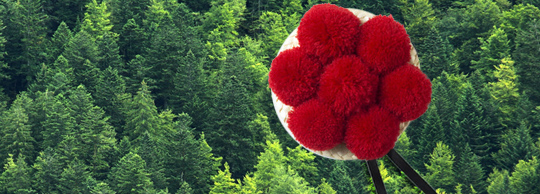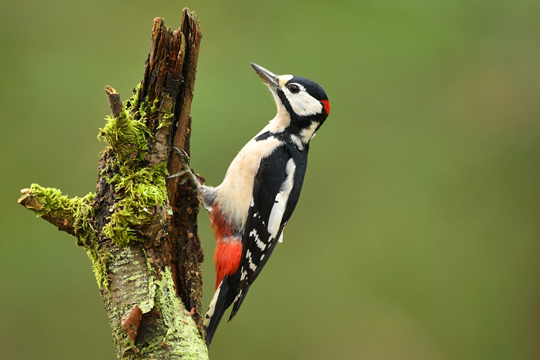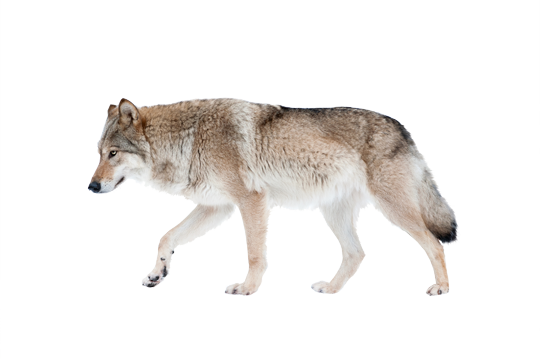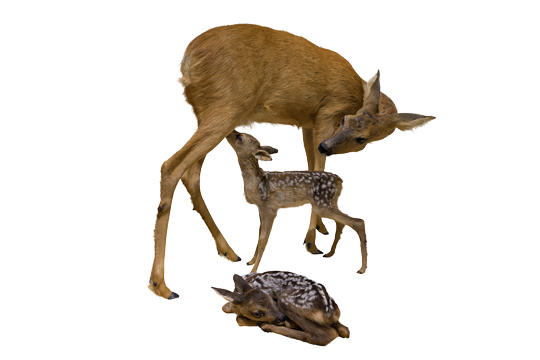Stars in the Black Forest
Freiburg, Jan 31, 2018
Whether through tourism, public relations or politics: Messages are often conveyed to various target groups in the Northern Black Forest through animals. But what kind of stories can be communicated using deer, grouse and wolves? Dr. Andy Selter from the Chair of Forest and Environmental Policy at the University of Freiburg has asked himself that question. Together with Prof. Dr. Ulrich Schraml from the Forest Research Institute (FVA) Baden-Württemberg and Julian Jaeger, a student of interdisciplinary anthropology, Selter is examining how people perceive various animal species.

Photos: C. Schüßler, Friedberg/ both Fotolia
“We want to know what role wildlife in the Northern Black Forest plays in political debate,” explains Schraml. In which context are they used symbolically? What stories do they “tell”? And what does that mean for the dialogue amongst various decision-makers? The project is a part of the “Wissensdialog Nordschwarzwals” (Knowledge Dialogue Northern Black Forest), a consortium that has accompanied the creation of Baden-Württemberg’s first national park over the past three years and is starting its second phase. The scientists surveyed 480 native residents as well as nature park visitors. They associate 13 animal specifies with cultural historical traditions. “Wild boar and wolves are the least popular and tend to polarize the most. Then you have the European grouse, bats, otter, lynx, fox and brown trout that are in the middle, followed by the most popular wild animals including roe deer, red deer, owls, hawks and woodpeckers,” summarizes Selter. “In addition, we also applied methods from gender and human-animal studies to uncover the animals’ cultural legacy. It is one of the first studies of its kind in the German-speaking countries,” explains Jaeger. “What makes our project special is the intensive discussions we have had with the surrounding population,” emphasizes Selter. Regional players are able to apply their gained insights to decide which animals can be used as symbols for which areas. “We want to make people aware that they could also make an error if they work politically or in public with animal symbols,” explains Schraml.
Symbol of the Black Forest: the European Grouse

Photo: edgar schepul/Fotolia
In advertising the European grouse is represented as nature’s origin. In the past the overexploited Black Forest offered the species an optimal habitat. It used to be that hard times for the forest were always great times for the European grouse. Now it is rarely the case. The grouse responds extremely sensitively to disturbances and is currently considered one of the species in need of protection. The most rare and interesting species from an ecological perspective are often selected as symbols for species conservation. “But when visitors to the region think about the European grouse, do they really associate it with a rare, shy, tenuous bird in need of protection?” asks Schraml. “The European grouse is always portrayed as male, courting, potent and vital. You convey a very different message with that image.” In addition, it is the kind of wild animal to which people have no real connection. “We could replace this old symbol of the Black Forest with one that also represents conservation goals,” suggests Jaeger.
Wild and Likeable: the Woodpecker

Photo: kwasny221/Fotolia
“We have discovered a shooting star that is appropriate as a symbol of the region on many levels,” explains Jaeger. The woodpecker lives in the wild and belongs to one of the five most popular wild animals in the Northern Black Forest. “It is everywhere and people take notice of the bird: You can hear and see it,” Selter gets to the heart of it. Through its lifestyle, the woodpecker helps maintain the forest’s ecosystem. It needs an environment in which deadwood is available – and the process protection that leads to deadwood is high on the national park’s list of priorities. “Here you can see that certain animal species go well together with specific regional goals,” says Jaeger.
Fascinating and Ferocious: the Wolf

Foto: Mari_art/Fotolia
People are divided about wolves. Some are afraid while others find them interesting because of the danger they present. The results show that people in urban areas are much more enthusiastic about wolves than people in rural ones. “Animal species that strongly embody the wild are seen much more positively by urban dwellers than those who use the land and seek to protect their grazing animals,” explains Selter. The wolf fascination stems from mass media, among other places. “Unlike the wild boar, the wolf teaches us a lot about how it lives, what ecology it has and what an interesting animal it is,” says Selter. Much like the European grouse, the wolf is used in advertising to symbolize the wild. “But the public projection need not have any real connection to the biological context,” explains Schraml: “People are always amazed that wolves can be photographed in close proximity. From a biological standpoint, it is not at all surprising. Why would a young, inexperienced wolf, to which nothing bad has yet happened, run away? But we always imagine that a wolf is wild and mysterious. That image has been disassociated from the species’ actual way of life.”
Favorite Animal: the Roe Deer

Foto: johnwilhelm/Fotolia
The roe deer is the most popular animal in the Northern Black Forest. “It is a commonplace species that does not interest ecologists or conservationists. At the same time, it has everything you need for a campaign,” says Schraml: Deer are relatively small, are often associated with femininity and, thanks to Walt Disney’s “Bambi”, with a sad story. “Truth be told, everything we are looking to transmit with the European grouse could be replaced much better with the deer.” Selter continues: “The deer is much more favored than the European grouse. It doesn’t seem to matter whether it damages forests or is rare or not. Even farmers and forest owners view the animal as likeable.” Wildlife management enters sensitive waters when it comes to hunting. At the moment, there has been intense intervention in the red deer population. The ideal image of a wild, untouched national park is threatened by hunting, especially deer. “When animals are shot, those Bambi associations raise their heads again,” says Schraml. “A national park administration has to offer good explanations to the people, otherwise it will get into trouble.”
Sarah Schwarzkopf

